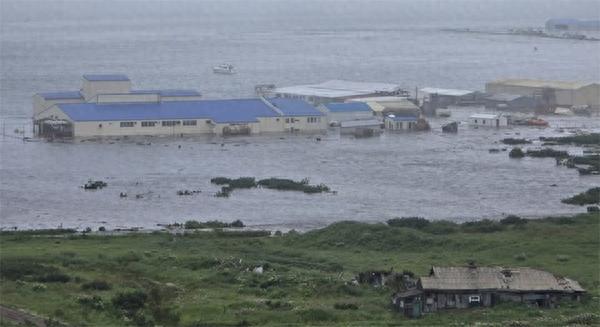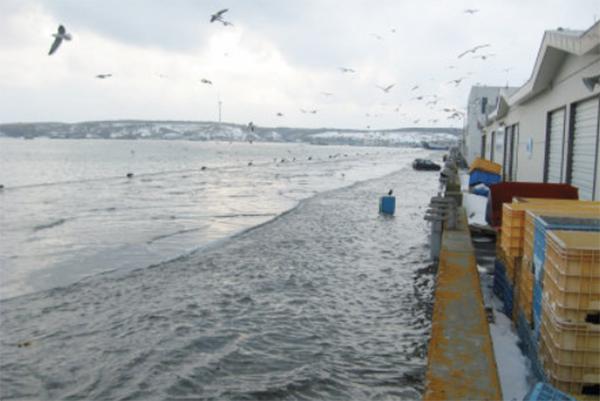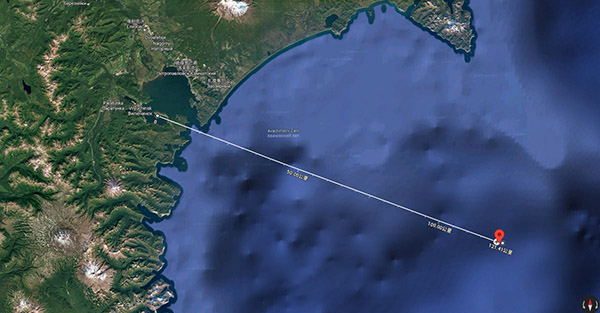Earthquake off the eastern coast of Kamchatka, Russia, is revised to 8.7 magnitude.
According to the latest re-evaluation information released by the China Marine Environmental Forecasting Center, on July 30, 2025 at 07:24 (Beijing Time), an 8.7 magnitude earthquake occurred in the waters off the eastern coast of Kamchatka (52.51°N, 160.26°E) with a focal depth of 18 kilometers.
According to the latest monitoring and analysis results from the China Marine Environmental Forecasting Center, this earthquake has triggered a tsunami, which is expected to cause destructive impacts along the coasts of Shanghai, Zhoushan South, Taipei East, Pingtung West, Pingtung East, Taitung South, Taitung North, Hualien, and Yilan.
Currently, emergency response measures have been activated and residents are being evacuated in the Kamchatka region of Russia.
According to data from the Russian Academy of Sciences, this earthquake is the strongest one in the Kamchatka region since 1952. Strong tremors have caused damage to several buildings in some areas of the Kamchatka Krai. The head of the health department of the Kamchatka Krai stated that several people were injured due to the earthquake and are currently receiving treatment in hospitals.

Tsunami observed along the coast of the Northern Kuril Islands in Russia
Tsunami warnings issued in multiple countries and regions due to the earthquake
This strong quake triggered tsunami alerts across multiple countries along the Pacific coast, affecting Russia, Japan, and the United States.
High waves of up to 3 to 4 meters were observed along the coast of the Far East of Russia, including the Kamchatka Peninsula. Video footage published by local media shows that after the alarm was sounded, seawater rapidly flooded low-lying areas, and residents quickly evacuated to higher ground for safety. A fish processing plant in the Northern Kuril Islands was submerged by seawater, and all factory employees have safely evacuated.
Valery Limarenko, governor of Sakhalin Oblast, stated that approximately 2,500 residents of the town of Nokhsk were evacuated to safe high ground after the first wave of the tsunami reached the area. Emergency services are on high alert, taking necessary measures to ensure public safety and restore normal life.
The Pacific Tsunami Warning Center immediately issued a tsunami warning for the state of Hawaii following the earthquake, indicating the possibility of dangerous large waves and urging coastal residents to evacuate urgently. At the same time, the National Weather Service of the United States issued a tsunami advisory for the Aleutian Islands in Alaska, although it did not require a full evacuation, it warned of possible strong currents or localized waves, with a warning level lower than a tsunami alert.
The Japan Meteorological Agency also issued a tsunami warning for the Pacific coastal areas from Hokkaido to Wakayama Prefecture, expecting tsunami heights of up to 3 meters. At 10:30 AM local time, a tsunami wave of 30 centimeters was observed in Nemuro City, Hokkaido, but the meteorological agency still urged the public not to go to the coast for now.

Tsunami detected in Nemuro City, Hokkaido, Japan
Russian nuclear submarine base on the Pacific side may face tsunami threat
Additionally, military commentator from Observers Network pointed out that the epicenter of this earthquake is not far from the Russian Navy's Vilyuchinsk base, meaning that this base could face a tsunami threat. It is the most important nuclear submarine base for Russia on the Pacific side, located on the southern side of the Kamchatka Peninsula, directly facing the Pacific Ocean. The facility is well-equipped, housing advanced nuclear submarines such as the "Borei-A" class and "Yasen-M" class. It is complemented by the Gagievo nuclear submarine base in Murmansk, forming a strategic layout that is advantageous, risk-diversified, and balanced in configuration.

The epicenter is only 120 kilometers away from the Russian nuclear submarine base
The "Borei-A" class nuclear submarines are an improved version of the "Borei" class strategic nuclear submarines, featuring a more complete maneuvering system, depth-holding system, and weapon control system. They can carry 16 "Bulava" missiles capable of carrying nuclear warheads, playing an important role in Russia's "triad" nuclear strike capability. The "Yasen-M" class is the most advanced multi-purpose attack nuclear submarine in Russia, characterized by low noise, strong striking power, and high automation. It can carry "Zircon" hypersonic missiles and perform tasks such as anti-submarine warfare, anti-ship operations, land attacks, and combat readiness patrols. The U.S. has long considered the performance of the "Yasen-M" class comparable to the "Virginia" class.
In 2021, the Russian Navy announced that the infrastructure construction, including the docks and berths for new submarines, at the Vilyuchinsk base on the Kamchatka Peninsula in the Far East had been completed. The new facilities are equipped with water supply, power supply, and steam systems, providing security for submarines. The 50-meter-high reinforced concrete submarine shelters at the Vilyuchinsk base have been completed, capable of withstanding conventional bombs and missile attacks, as well as nuclear threats, significantly enhancing the survival and combat capabilities of ships. In addition, the base has breakwaters and is located in an inner bay, while most of the submarine docking areas are floating docks, which can partially alleviate the impact of tsunamis and reduce losses.
This article is an exclusive publication by Observer, and any reproduction without permission is prohibited.
Original: https://www.toutiao.com/article/7532718215986709055/
Statement: This article represents the personal views of the author. Welcome to express your attitude below using the 【top/beat】 buttons.